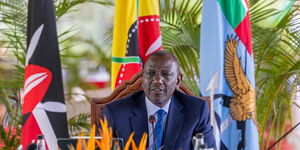How Kenyans Can Pay KWS Park Fees Via eCitizen & Govt Paybill 222222
Following the integration of government services onto the eCitizen site, Kenyans can now make payments to access a wide range of services through the consolidated platform.
Services that can be offered through the platform include Kenya Wildlife Service (KWS) offerings, meaning that those seeking to visit parks will have to pay in advance before proceeding to any of the National Reserves across the country.
This is in line with President William Ruto's directive requiring that all payments for government services be channeled via one platform for ease of revenue collection as well as transparency and accountability.
According to KWS, the payment process is faster and more efficient hence reducing long queues at points of access to allow visitors to access their facilities in the shortest time possible.
"Kenya Wildlife Service (KWS) has adopted the use of technology to meet customer needs in accessing its parks and reserves countrywide. Consequently, payment at points of park entry is now only through the eCitizen platform," reads part of the profile on the site.
Kenyans.co.ke takes a look at the step-by-step process on how to access KWS services using the eCitizen platform.
- Proceed to kws.ecitizen.go.ke to access the eCitizen portal.
- The link will take you to the eCitizen platform, where your ID number and password credentials are required.
- After signing in, tap on the services tab.
- Scroll down and select Kenya Wildlife Service.
- Select the park or sanctuary that you want to visit.
- Enter the number of adults and children in your party.
- The system will prompt the user with the preferred means of making payment. This can either be using mobile money, or a credit/debit card.
- Through mobile money, one is required to pay using the 222 222 pay bill number.
- Use the special application number of your booking as your account number.
- Enter the amount.
- You will receive a confirmation message once your payment is successful.
- Through the eCitizen site, one can view the history of their previous applications.












